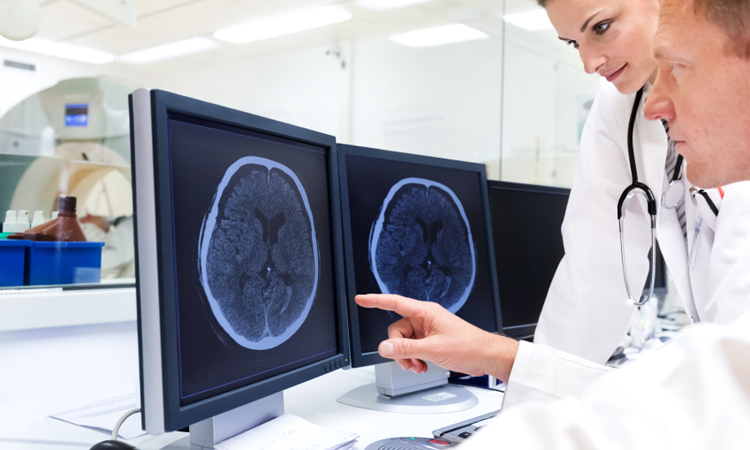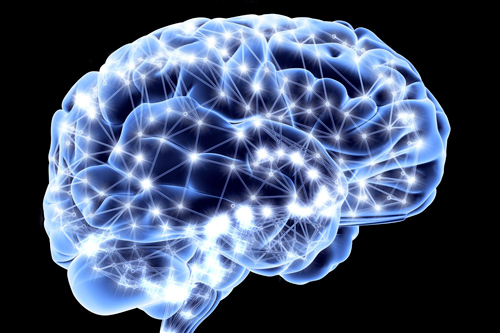
The egg-shaped device is wheeled up behind me. A padded curve cutting into its lower front is settled over my head and my identity and own unique alpha-wave frequency—about 10 Hz—is confirmed. A recorded voice tells me another session is getting underway. I’m sitting in this device to learn if magnets could cure depression.
“I’ll be back to check on you,” says the woman administering the clinical device trial as she dims the lights before her lab coat and long curls sweep into an adjoining room.
A cacophony erupts from within the plastic orb now in battle with my decades-old depression. There is a row of three spinning magnets perched over my head—from forehead to crown—bathing most of the outer layer of my gray matter with steady waves of magnetic energy.
Ever since researchers began to notice patients receiving an antidepressant effect from MRI procedures, magnets have become an increasingly popular field of study.
Gaining FDA clearance in 2009, Neuronetics has been acquiring clients for its NeuroStar device, a padded chair with swing-out arm that bombards a small space behind the forehead known as the dorsolateral prefrontal cortex with bursts of magnet-born electricity in hopes of relieving depression. This repeated Transcranial magnetic stimulation (rTMS) device, which looks startling like a dentist’s chair, has been followed by Israel-based Brainsway’s “deep” TMS, promising to drill deeper into the head with slightly more robust bursts.
Some have found recovery thanks to rTMS, and that has led to a number of public champions, including Martha Rhodes, who writes about her experiences in two books. She was the first who coached me as to which insurance companies have begun to approve rTMS treatment.
Though I had a history of panic and depression dating back to my teenage years, in 2012, waves of panic attacks came crashing down multiple times a day. Suicidal thoughts clouded my mind for hours at a time and an entrenched depression set in. Trips to an emergency room and outpatient therapy followed. Doctors began to suggest ECT, formerly known as electroshock therapy.
I was determined to try a lower-risk treatment. Instead of the many rTMS treatment studies, I found something else. NeoSync’s sTMS model of treatment targets not one brain region but endeavors to entrain the brain’s circulating electrical activity—its “rhythmic oscillations”—back to an optimum state via a wash of regular, low-energy magnetic waves.
After a couple weeks of daily, 40-minute sTMS treatments, I experienced the unexpected: finding myself devouring academic books on philosophy, psychology, and anthropology with an acuity and retention I hadn’t known for years – if ever. My mind had been inexplicably sharpened. With that new mental energy came insomnia. A common enough symptom among some depressives, but something I’d never wrestled with.
However, along with improved energy levels and mental focus came a gradual lifting of my depression.
As I noted on my blog Depression-Time, my fantasy life had changed radically: I’d moved from one where I saw myself persisting, taking solace in small pleasures, but always marked by disability, to a world filled with grand endeavors, travel, and risk-taking.
After nearly two months of almost daily treatments, I returned home with a creative fervor I had not known since my youth. I set up a home office to pursue my freelance writing career, fixed too many broken things to count, caught up on my bills, changed the oil and tuned up the car, and even got a haircut. I wasn’t manic, I was free and functional.
“This is the person I always knew I could be,” I thought more than once. I had been gifted with a new brain, or my original one was restored; my heart and hopes swelled. Yet after about six weeks, I began to feel the familiar slide—my tune-up was wearing down. The previous symptoms returned, but only in bursts. The new normal was a more familiar lethargy I could surmount in cycles.
It hasn’t been easy since the NeoSync trial, but I’ve since learned a lot about mental illness and have experienced lifestyle changes: reduced stress, movement-based therapies, dietary changes, and a low dose of a mood stabilizer, among them.
But as good as I’m able to feel, I’ve decided to speak openly about my experiences with depression and recovery. As I wrote the week I left the trial:
“While I’d be more than happy to walk out of my depression and never lose myself to despair again … I also know I don’t want to ever lose my identity as a depressive, as someone who has lived with mental illness, to remain a part of the struggle to eradicate the stigma. To that end I’ll have to go public with my experiences. Those who knew me before must get more of the story. How I bring my still-separate worlds into relationship remains to be seen. But always, everywhere, understanding and compassion first. Whatever else comes next comes next.”
Click here to get inspired by Rose’s easy steps to positively change your mind


